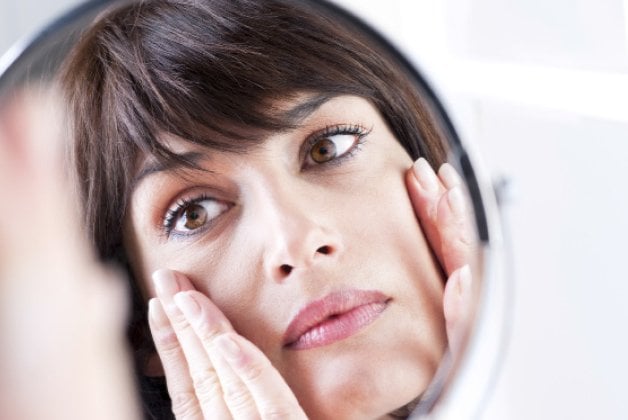
All children, except that Peter Pan dude, grow up. Then they get old. And wrinkly.
Crow’s feet, laugh lines, frown lines. We all get them, provided we live long enough. The pathology is that those creases, which start in our 20s and signal a deepening of our life experience, are a source of dread fed by an ageist media system.
The imperative to resist aging is not only a massive time- and resource-waster, but it devalues the kind of wisdom that actually takes time to accrue. And really, all that lifting and freezing doesn’t make Nicole Kidman or Julia Roberts look younger – just weirder.
We should probably learn how to love the way we look at any age – or better yet, find more important things to care about. But not everyone can be a pioneer. I can’t – yet. In the meantime, here are some tips.
What the experts say
“Drink one or two cups of green tea daily to quench free radicals that damage skin and cause wrinkles. Make a face mask by blending powdered matcha green tea and water. Sugars, white breads and refined grains contribute to the formation of AGEs (advanced glycation end-products), which promote inflammation, leading to tissue damage and wrinkles. Embrace fish, olive and flax oil. Ditch products that contain sodium laureth/lauryl sulphate, parabens, propylene glycol, fragrances and phthalates. Contrast hydrotherapy brings blood and nutrients to the skin and removes wastes and inflammation in your shower, do two minutes hot water, then 30 seconds cold. Repeat for three to four cycles, ending with cold. Drink half your weight in ounces of water per day. Increase lymphatic flow with five minutes of dry body brushing before bathing. Brush in long, light strokes from hands and feet toward the collarbones.”
KATE WHIMSTER
naturopath, Wavelength Wellness
Toronto
“Young women who notice their first wrinkles think, “Uh-oh, I’m turning the corner into a new phase of life.” They have this sense of dread. What we’re now being told is that wrinkles can be avoided by getting fillers and Botox as early as possible – and many in their late 20s are doing just that. Wrinkles hit us at some core part of our identity, and panic sets in. But I’m hoping that culturally we’re moving into an era when signs of aging will be more acceptable as more and more people live well into their 90s feeling productive and vital.”
VIVIAN DILLER
psychologist, author of Face It: What Women Really Feel As Their Looks Change
New York City
“Using acupuncture, we try to work against sagginess and on the meridians to retone the muscles and stimulate the skin collagen. Everyone needs different help. People have a hard time exercising muscle groups [on the face], so it’s mostly an issue of weakness. I would suggest six, 10 or 15 sessions depending on age, muscle [tone] and expectations, and then a maintenance program.”
ISABELLA YAN
Chinese medicine practitioner
Golden Needle Acupuncture Clinic, Pickering
“Optimize digestion. Eliminate foods that cause gas and bloating and take a daily probiotic and digestive enzyme. If your digestive system is not working properly, this will lead to wrinkles around the nose and mouth. Red cabbage regulates cortisol levels and can diminish crow’s feet. Watercress cleanses and oxygenates tissues. Beets remove congestion from the body and smooth skin around the nose and mouth. Walnuts are high in omega-3s and tackle age spots and sagging skin. Fruits and veggies with high levels of silicon strengthen connective tissue: cucumber, bell peppers, leafy greens, tomatoes, apples, onion. Collagen supplements strengthen the dermal layer of the skin, as does Mesotherapy, micro-injections of vitamins, minerals, hyaluronic acid and homeopathics into the dermal layer.”
STACEY SHILLINGTON
naturopath, Toronto
“Limit sun exposure. Wear a hat and SPF 30 sunblock every day. I recommend skin-tightening procedures for wrinkles on the lower face. Thermage uses radio frequency to tighten collagen. Then you can get into injectable fillers. A 20-minute session can reduce wrinkles by up to 95 per cent. For expressive wrinkles like frown lines, use Botox. Retin A and retinol used topically – a solution or serum of 1 per cent or higher – cause collagen-remodelling underneath the skin and are useful in treating photo-aging. Collagen and elastin molecules are big, so it’s hard for them to be absorbed into the skin, which is why creams containing them do very little. Diet provides the building blocks of collagen – fruits, carrots, dark leafy vegetables, vitamin C and protein.”
LISA KELLETT
dermatologist, DLK on Avenue
Toronto
Got a question?
Send your Althealth queries to althealth@nowtoronto.com












